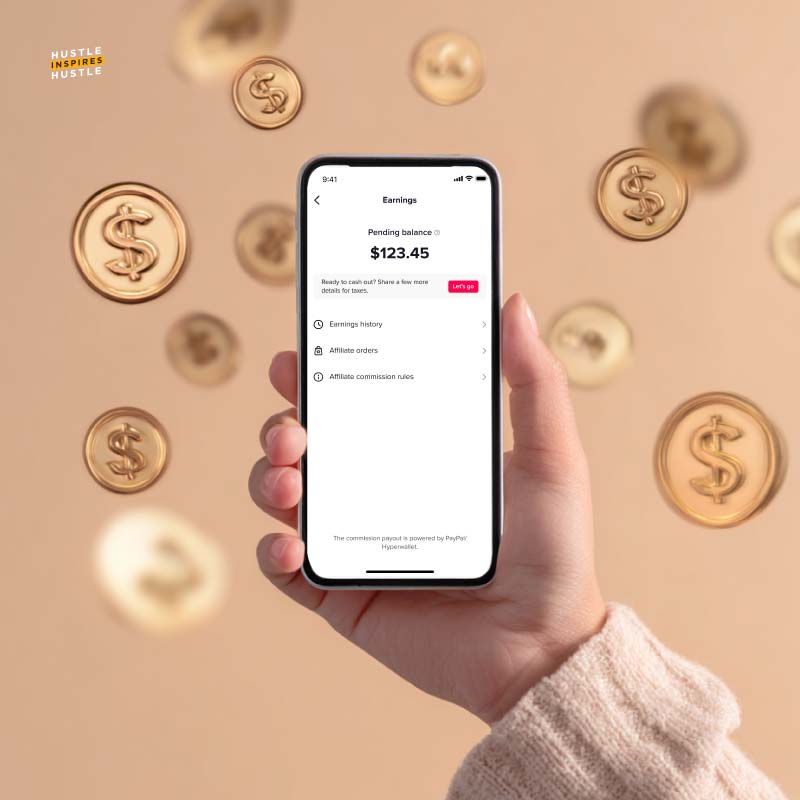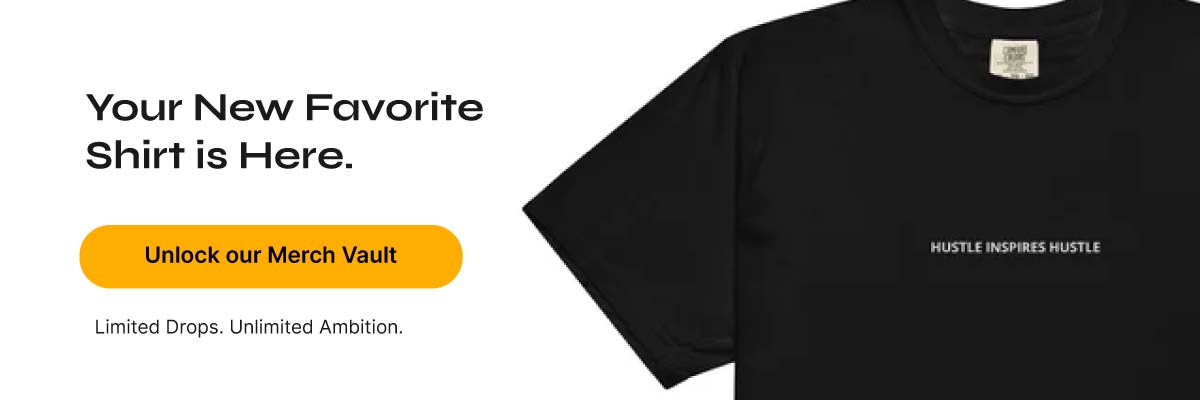Who is Melanie Perkins? How the Canva Founder Built a Global Design Platform
Who is Melanie Perkins? Learn how the Canva founder built a global design platform with simplicity, community, and product-led growth—actionable takeaways inside.

TikTok is no longer only a place for memes; it has become a global shopping mall. By joining the TikTok Shop Affiliate program, you earn money when viewers buy the products you feature in your videos and livestreams.
This guide breaks down what a TikTok Shop affiliate does, the requirements to join, how to apply, how commissions work, and the content strategies that convert.
In simple terms, a TikTok Shop affiliate is a creator who earns commission by promoting products directly in TikTok videos and live streams. Instead of sending followers off‑platform with a generic affiliate link, the program provides an in‑app storefront with product cards that viewers can tap without leaving the video.
When a sale happens, TikTok credits the commission to the creator’s account.
This integration is different from traditional affiliate marketing because it uses native tags rather than external links, which boosts conversion rates.
To qualify, most creators need at least 1 000 followers, a history of recent video views and a compliant account. Commission rates are set by sellers and typically range between 10 % and 50 %. Payouts arrive monthly after a 21‑day hold that covers the customer return window. If that sounds like a fit, keep reading for the full playbook.
The TikTok Shop ecosystem has three players: creators (affiliates), sellers, and TikTok. Sellers list products and set commission rates; sometimes as low as 1 % and sometimes up to 80 %, depending on margins and promotional strategy.
Once a creator meets eligibility requirements, they can browse available offers inside the app and request approval from the seller. TikTok approves the match and tracks every sale through product tagging.
Product tags appear as clickable cards in videos and pinned at the bottom during live streams. When a viewer buys via the tag, TikTok records the sale and releases payment to the creator after the return window has passed.
TikTok has also rolled out a feature to add external links from platforms like Amazon, Walmart or Target. These links appear in the comments section and drive traffic off‑platform, but they convert less frequently than native product tags.
The core benefit of TikTok Shop is its seamless checkout experience: customers can view, add to cart and pay without leaving the app, which significantly boosts conversion rates.
TikTok sets specific thresholds to ensure quality and protect buyers. Eligibility varies by region, but most creators must:
These requirements are not set in stone and can change by country. For example, the Philippines program requires 5 000 followers, while pilot programs occasionally accept creators with only 1 000 followers.
Always check your Creator Tools dashboard inside the app to see current thresholds for your region.
Even if you are a solo creator or student, treat your affiliate work like a real business.
Decide if you will operate as a sole proprietor or form a limited liability company and set up the appropriate tax documents. Keep receipts for every product you promote and maintain a simple ledger of commissions, returns, platform fees, and chargebacks.
If you promote regulated categories such as supplements or cosmetics, maintain certificates of analysis and avoid making unverified health claims; TikTok and regulators can penalize false advertising.

You can apply directly inside the TikTok app. Here’s a simple process based on creator experiences:
TikTok may take a few hours to review your application. If you’re rejected, check for account violations or missing information and try again.
Not all products are created equal. When browsing offers, pay attention to:
Requesting product samples is common.
Receiving a sample allows you to shoot demo videos, create hands‑in‑frame footage and produce authentic content. Brands may cover the cost or reimburse you after reaching a sales threshold.
TikTok Shop uses a percentage‑based commission model rather than fixed rates. Sellers choose the commission percentage for each item based on product margins and competition. High‑ticket electronics often offer 1–5%, while fashion and lifestyle items range 10–25%. Digital products sold through external networks can reach 30–50%.
TikTok processes affiliate payments on a monthly schedule with a 21‑day hold to cover the 30‑day return window.
This means your commissions for July will typically pay out at the end of August.
International creators might face additional processing time due to currency conversion and banking regulations.
Some sellers offer tiered commission structures where your percentage increases if you hit certain gross merchandise value targets. Always read the offer details to know if there are performance bonuses.
To maximize conversions and earnings:

Great content is your sales engine. TikTok’s algorithm favors engaging, authentic videos that provide value. Here are some principles that will help you create viral TikTok content:
Short-form videos work best when they are simple and structured. For example, a fitness influencer might film a 15-second demo showing a common problem like wrist pain during push-ups, then reveal how a specific grip aid fixes it. Add a quick value line such as “under $25 and saves your form,” and close with a call to “check out the pinned product card.”
List-style videos are another quick win. Try formats like “three reasons I switched to resistance bands” or “mistakes to avoid with home workouts.” Use quick cuts, captions, and on-screen text for each point so the pacing feels dynamic and easy to follow.
For a low-lift content engine, create micro-UGC montages.
Combine three short clips from different workout angles or lighting setups, overlay brief text like “light, compact, gym-ready,” and pair it with trending audio. End with a clear call to action inviting followers to shop the featured gear.
Live shopping converts because viewers can ask questions and see products in real time. Plan your sessions like a mini show. Set a clear theme and run time, ideally between 45 and 90 minutes. Themes such as “daily routine,” “unboxing haul,” or “build your dream kit” keep the experience focused and fun.
Encourage attendance by seeding early viewers. Offer a small giveaway or spin-the-wheel prize for those who join early. Interactive touches such as trivia questions help boost engagement right from the start.
Keep your product carousel tight. Feature five to ten items and pin your hero product for easy access. Revisit each item every 10 to 15 minutes so late joiners still catch the main demos.
Finally, use urgency and social proof. Limited coupons, countdown timers, and live customer comments build momentum. Sharing reviews or testimonials during the stream helps overcome hesitation and turns browsers into buyers.
Your TikTok Shop storefront is like a mini website. Organize products into collections such as “Under $25,” “Beginner Kit,” or “Editor’s Picks.” Write concise descriptions using keywords from your niche and highlight benefits, not just features.
For thumbnails, choose bright images with a hand holding the product to increase trust. Align the first frame of your video with the product title so viewers immediately know what they’re seeing. Add internal links from your bio to your top collections and include three to five links max; overcrowding your bio can hurt reach.
Search on TikTok functions similarly to Google.
To show up when users type “TikTok shop affiliate marketing” or “best ring light,” you need to optimize your captions and on‑screen text. Start your caption with the primary keyword plus your product name (e.g., “TikTok shop affiliate marketing: best ring light for makeup”).
Follow with a benefit or use case and include a short call‑to‑action. On‑screen text should mirror the caption keywords and appear within the first few seconds for TikTok’s speech recognition to capture it.
Use relevant niche hashtags consistently. Avoid random trending tags that don’t align with your content; the algorithm may penalize misleading tags. Over time, your profile gains topical authority and stronger organic reach.
TikTok Shop availability varies. At the time of writing, the program supports creators in the US, UK, and Canada, with expansion into other regions like Southeast Asia underway. Each region has unique commission rates, payout windows, currencies, and tax requirements.
Always mention the market when discussing prices to avoid confusing your audience.
Post videos when your target buyers are awake and consider the time‑zone overlap for live streams. Follow local advertising rules regarding returns, consumer protection, and disclosure. For example, the US requires a 30‑day return window, while other markets may differ.

Staying compliant protects your reputation and also ensures you keep your affiliate privileges. TikTok enforces strict disclosure rules: creators must activate the Branded Content or Paid Partnership toggle and include clear text like “I earn commission from purchases” in the description.
Hashtags such as #ad or #sponsored supplement the disclosure but cannot replace the official toggle. Adding a disclosure statement in your bio provides extra transparency.
TikTok prohibits re‑posting or re‑editing the same promotional videos and using AI voices without adding personal commentary. Violations can lead to content removal, reduced reach, or account suspension.
Always keep your content original and mix affiliate posts with non‑commercial content to maintain audience trust.
Commissions are only final after the return window closes. The standard return window on TikTok Shop is 30 days from delivery. If a buyer returns an item within that period, the commission may be clawed back. To manage returns and protect your reputation:
TikTok provides a robust analytics dashboard through TikTok Shop and Creator Analytics. Use these insights to track metrics such as:
Run A/B tests by varying the first three seconds (hook testing), the placement of your CTA, and price framing. Compare metrics over several posts and choose the format that drives the highest add‑to‑cart and purchase rates.
Check your analytics dashboard weekly and adjust your content calendar accordingly. Consider using external analytics tools like Google Analytics UTMs if you integrate external affiliate links.
Treat your affiliate work like a system, not a gamble. Build a weekly cadence: two to three videos plus one live stream. Plan monthly themes around seasonal events (Back to School, Holiday Gift Guides) and track how each theme performs. Quarter by quarter, update your product lineup based on data and market trends.
Develop relationships with sellers to secure samples, bundles, and exclusive discount codes.
Document your SOPs (shooting checklist, caption templates, live run‑down) so you can delegate or scale later. When you consistently hit your sales goals, negotiate higher commission rates or explore brand sponsorships, merging affiliate revenue with influencer campaigns.
Many creators dive into TikTok Shop without a plan and make avoidable mistakes. Here are the top pitfalls:
Becoming a TikTok Shop affiliate is a legitimate pathway to monetize your creativity. Anyone can do this (entrepreneurs, college students, parents, or career changers) because the platform rewards proof of work and consistent outreach. Start by confirming you meet the eligibility requirements, then apply through the TikTok app.
Select five to eight products in a niche you care about and publish proof‑driven videos that show results. Host live shopping sessions, track your metrics, and iterate every week. Keep your content original, disclose your affiliate relationships, and focus on building a community that trusts your recommendations.
Share your wins with us in the comments below and level up with our latest episode on creator revenue and sustainable monetization.
Elevate your entrepreneurial game with actionable advice and inspiring interviews from high-level entrepreneurs, business owners, and overall badasses in the game. Get more insight and inspiration on our blog posts, podcast episodes, or invite-only community.
Apply through the Creator Marketplace or in-app affiliate section. Complete ID, tax, and payout setup, then link your in-app storefront. Accept offers from approved sellers, create shoppable videos, and feature a pinned product card. Consistent posting builds traction and commissions through the TikTok Shop Affiliate Program over time.
A compliant account, valid ID, tax details, and seller approval are required. Eligibility varies by region, so confirm inside your dashboard. Follow return policy guidelines, maintain content standards, and keep payout information accurate to stay active and compliant within the tiktok shop affiliate program across all markets.
Affiliates receive a commission rate on completed orders once the return policy period ends. Payments follow each market’s payout window, which may vary. Use detailed product tagging to ensure accuracy and monitor EPC and conversion rate in your dashboard to evaluate campaign performance and improve long-term earnings.
Focusing on niche selection, clarity, and testing makes the tiktok shop affiliate program a strong entry point. Start with five to eight SKUs, run a weekly live, and produce straightforward demo videos. Track EPC and conversion rate to refine offers and grow consistent, compounding affiliate revenue.
Creators often succeed using hands-in-frame tutorials, UGC, or voice-over explainers. Highlight benefits through demo videos, natural light, and caption overlays.
Add live shopping segments and product close-ups for trust and engagement. A well-organized in-app storefront helps drive sales while keeping the focus entirely on the product.
TikTok Shop affiliates create content that promotes products through authentic storytelling. They integrate product links in shoppable videos, livestreams, and captions to drive conversions. Each sale tracked through their pinned product card earns a commission, making affiliate creators an essential part of the platform’s growing social commerce ecosystem.
The TikTok Affiliate Shop is a curated marketplace where creators connect with brands offering commission opportunities. It lets you browse campaigns, compare commission rates, and select products that fit your niche. By pairing your content with trending items, you can monetize influence and build long-term affiliate income streams.
TikTok Shop affiliate marketing connects creators and sellers through content that inspires purchases. Creators choose products, film demo videos, and tag them in posts or live shopping events. The system tracks every sale and pays creators commissions, allowing both sides to grow visibility and revenue within the platform.



